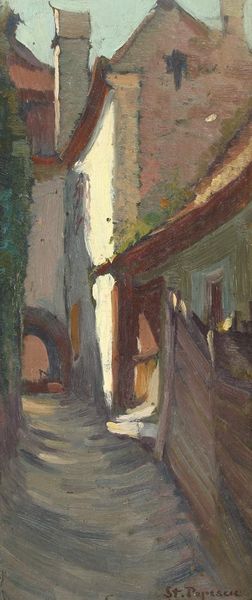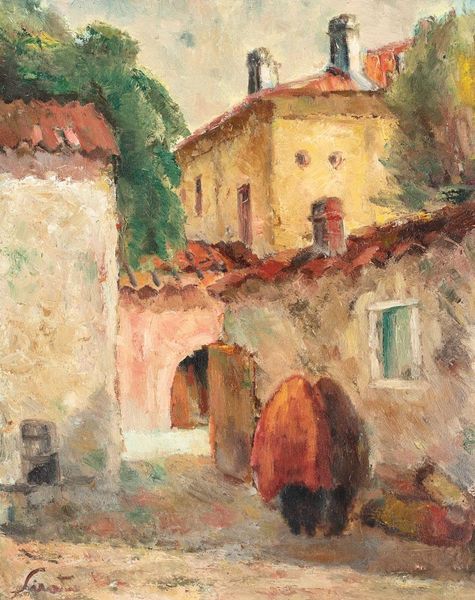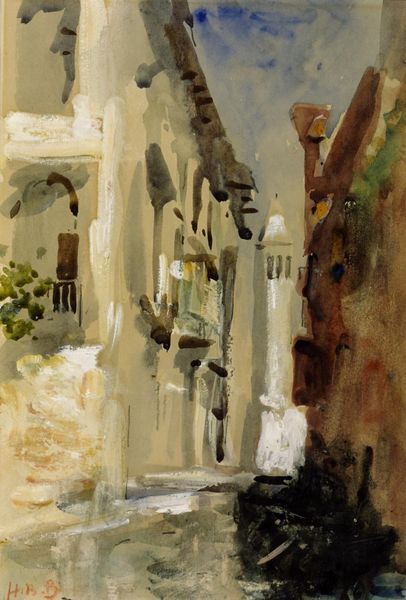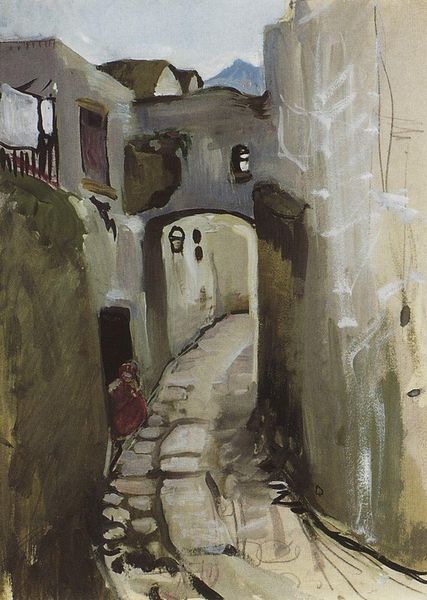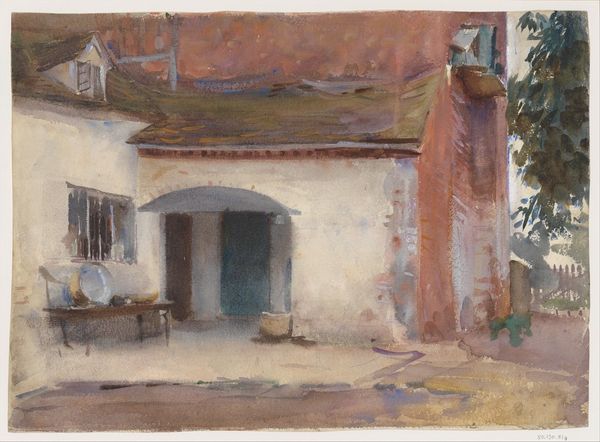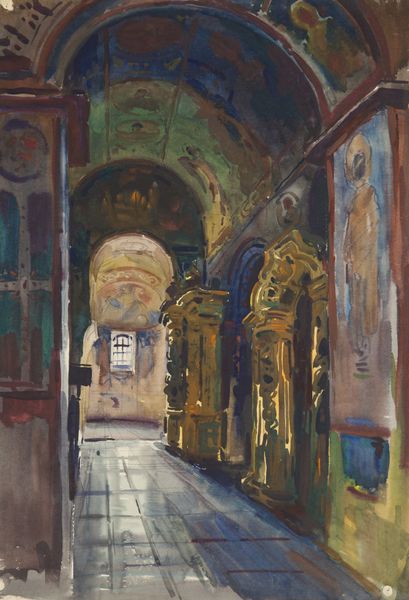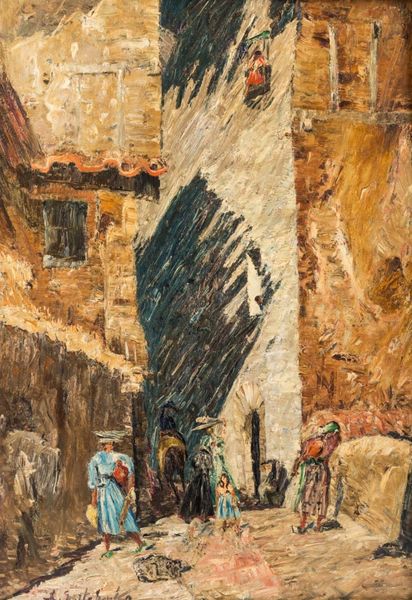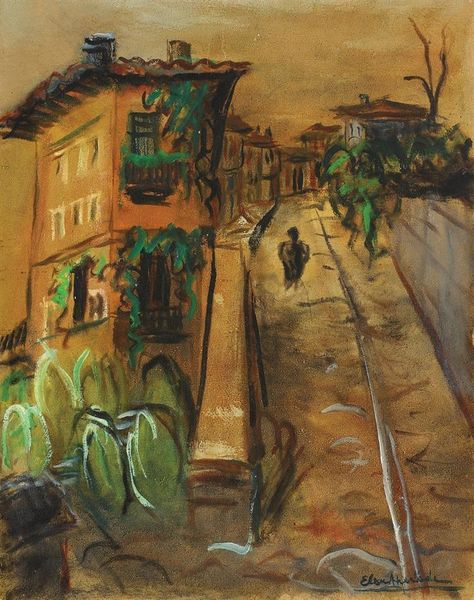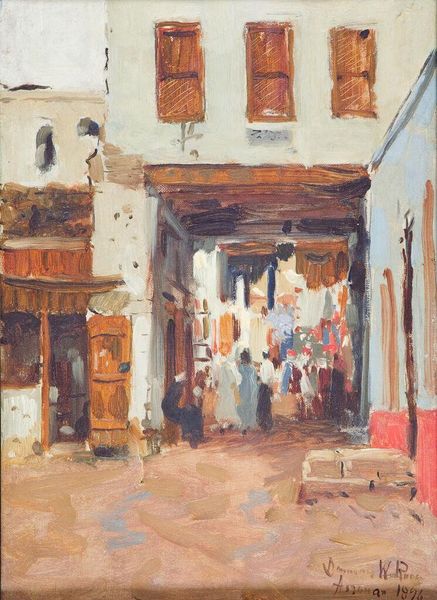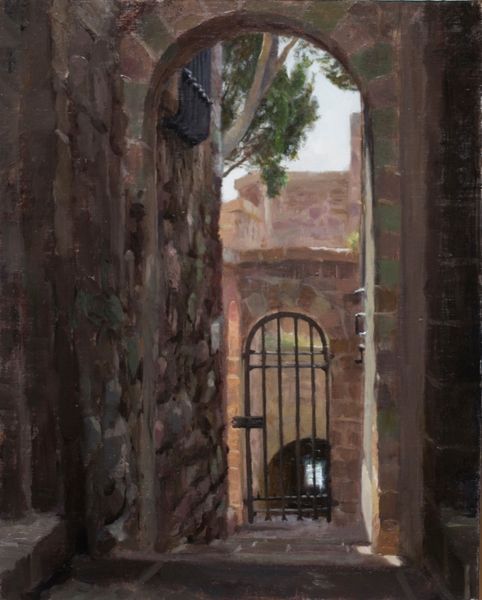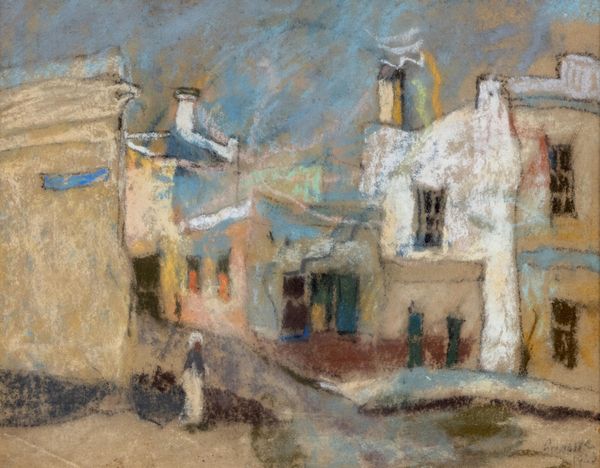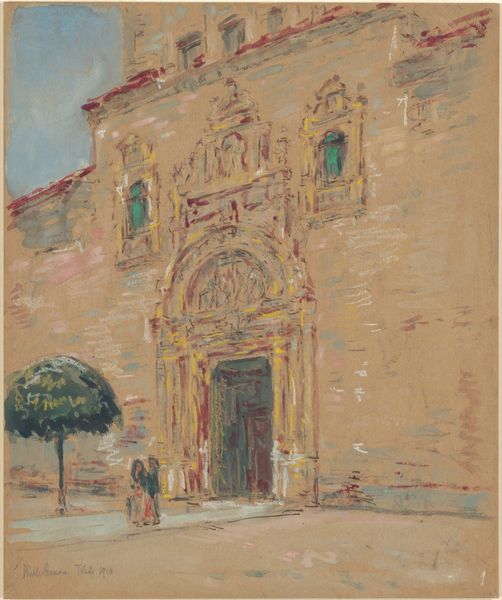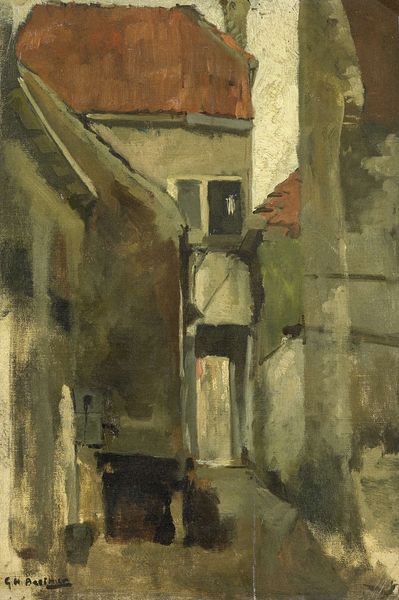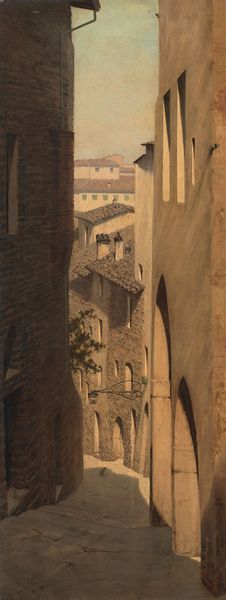
painting, watercolor
#
painting
#
landscape
#
oil painting
#
watercolor
#
arch
#
orientalism
#
cityscape
#
genre-painting
#
watercolor
#
realism
Dimensions: 50 x 36 cm
Copyright: Public domain
Curator: Welcome. We're standing before Eugene Lanceray's "Street in Tbilisi," painted in 1921, rendered in watercolor and oil. It’s a captivating snapshot of daily life in the Georgian capital. Editor: Right off the bat, it's got that slightly faded, wistful vibe of an old photograph, doesn't it? The light feels dusty, like the sun is baking everything to a simmer. Curator: The artwork reflects a significant period of change, just after Georgia's brief independence and its subsequent incorporation into the Soviet Union. Lanceray, working within the established artistic circles, often depicted scenes of local life, reflecting both orientalist tropes and realist tendencies. Editor: Orientalist, huh? I can see it, but it also feels like… genuine affection? Maybe that’s the romantic in me talking. The woman on the balcony, for example. Is she just an exotic object, or a person caught in a private moment, like a secret glimpse into her world? Curator: Well, orientalism always carries that tension. But consider the attention to detail, even within the watercolor medium. He captures the architectural textures, the patterns of light and shadow… it's an attempt to document, even if filtered through a specific lens. Editor: Document, yes, but also to distill the *feeling* of a place. Like how the leaning buildings and narrow street just pull you in. It feels intimate, yet slightly claustrophobic, the buildings bearing down as much as embracing you. Curator: I think you're spot-on regarding the perspective. The high vantage point invites us in but also emphasizes the constraints of the historical moment. Lanceray was part of the Russian artistic elite yet was also depicting the life of a newly Soviet city, presenting challenges for an artist. Editor: What strikes me is this sense of quiet resilience. Life continues—music from the violinist by the arch, trade around the corner, quiet observation—even amid potentially turbulent times. What’s your takeaway? Curator: For me, it underscores art's complex role, showing how depictions of everyday life inevitably engage with power structures and politics. Editor: And I’m walking away reminded of how a painting, with all its beauty and imperfections, can feel like a memory unearthed—dusty, evocative, and ultimately, deeply human.
Comments
No comments
Be the first to comment and join the conversation on the ultimate creative platform.
